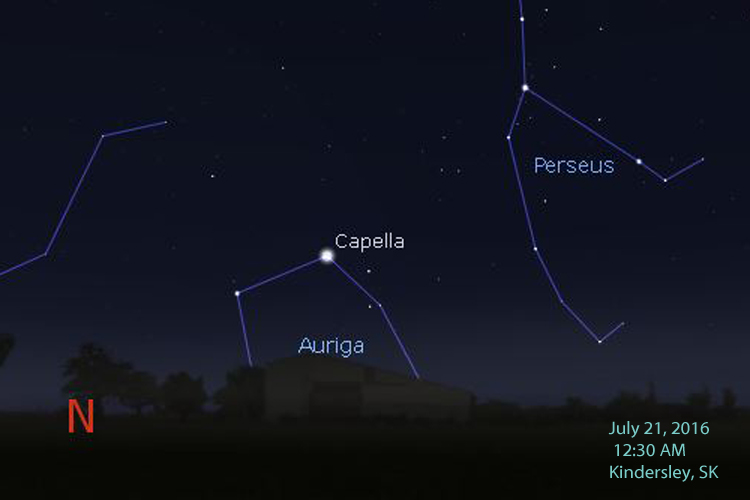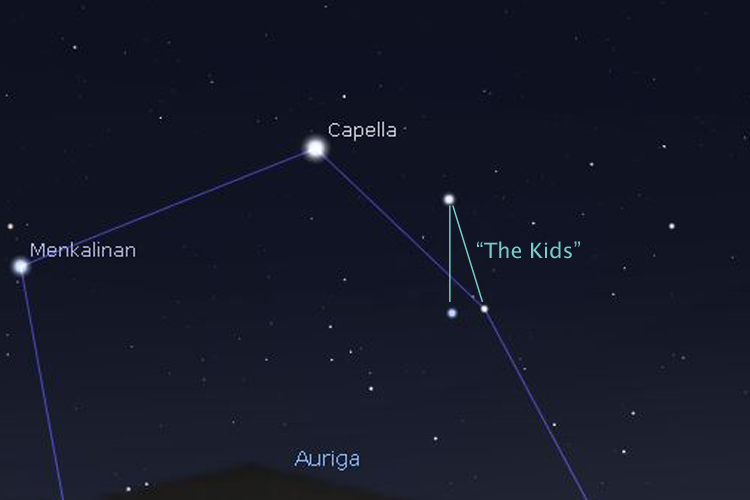It’s big.
It’s beautiful.
It possesses an energy and power that will leave you in awe.
And it’s not a goat.
Wherever it got its name, Capella the Goat Star certainly doesn’t resemble the animal it was named after. You can blame those ancient Greeks!
It’s generally known as a winter star, found in the constellation Auriga. During the snowy months, it climbs high overhead, near the well-known constellations Taurus and Orion. But from Kindersley’s latitude, you can also see it in the summer. You just have to look in a different region of the sky.

In July, you can find it just above the northern horizon. It’s the brightest star in its vicinity—the sixth-brightest in our night sky, in fact—and you might see it twinkling furiously and even flashing colours. That’s due to the increased atmospheric distortion it experiences close to the horizon. The rest of the time, it appears a bright yellowish-red. In fact, because of its colour, it’s sometimes confused with the planet Mars. Now, though, they’re easy to distinguish. Mars is in the southwest during the evening, while Capella is in the north.
To make sure you’re looking at Capella, there’s a quick landmark (er, skymark?) you can check for. If you look to the east of it and shift your gaze down slightly, you can pick out three fainter stars. These form an asterism known as “the kids”. If you can spot them, then you know you’ve found Capella!

One cool thing about Capella is that it’s actually composed of four stars—two binary systems. The brighter binary system is composed of two yellow giants, orbiting a common center of mass roughly 42 light-years from Earth. They’re spectral type G stars, like our sun. The second binary system is composed of two red dwarf stars. You can’t make out any of these four stars with the naked eye—we just see them as one big yellow star. All the same, they make a great target for anyone lucky enough to own a reasonably powerful telescope.
Read more by Katharina on her page Sky Watcher
